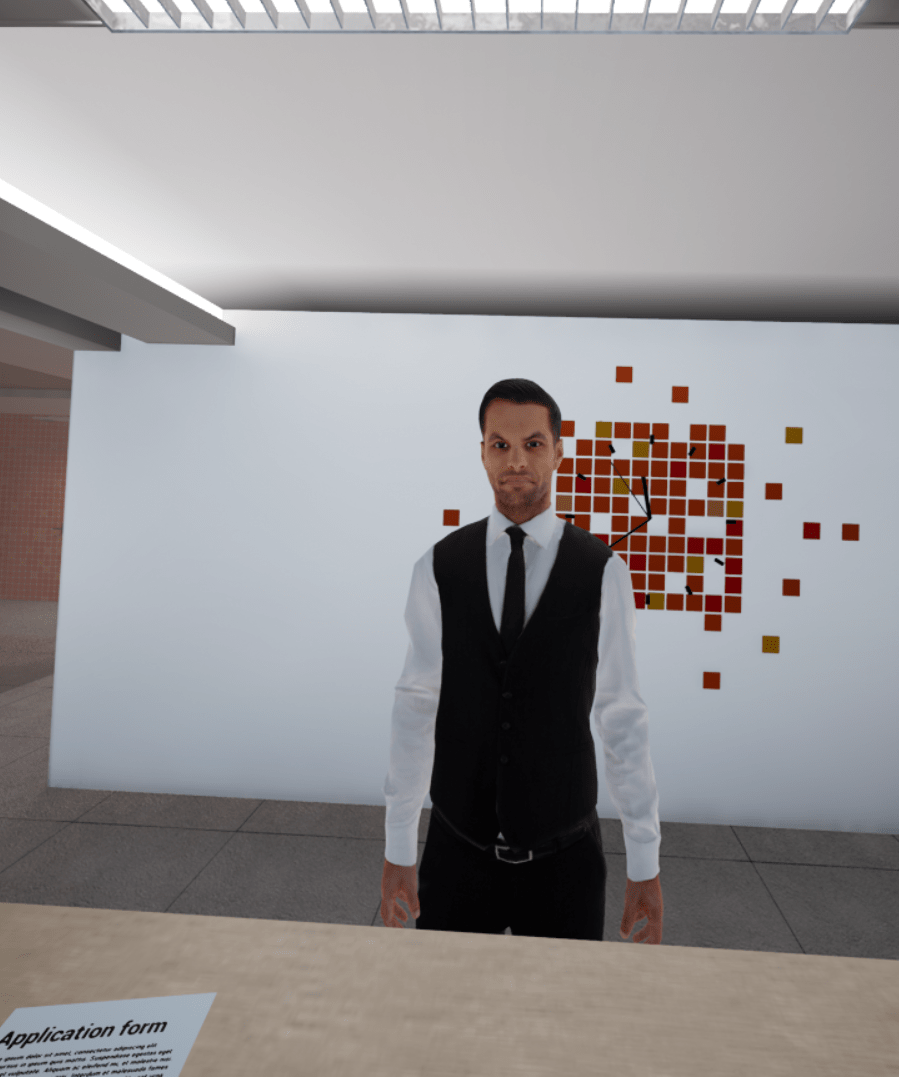
VR Customer Service training
 A Customer Service training might be very problematic.
Most of the customer service courses offered on the market do not provide a
comprehensive training on how to react in extremely stressful situations.
During the course participants only learn in theory what to do in particular
situations, in the best case – by role playing some scenarios, much more often -
from scripts and Power Point presentations. Even this best case method is not
immersive enough, thus it results in low engagement of training participants and
insufficient training results. Using standard training methods people are unable
to train themselves in handling a difficult and unpleasant client. Moreover,
during a crisis moment e.g. with an "active shooter", they start to panic
and immediately forget what they have learned throughout a whole course.
A Customer Service training might be very problematic.
Most of the customer service courses offered on the market do not provide a
comprehensive training on how to react in extremely stressful situations.
During the course participants only learn in theory what to do in particular
situations, in the best case – by role playing some scenarios, much more often -
from scripts and Power Point presentations. Even this best case method is not
immersive enough, thus it results in low engagement of training participants and
insufficient training results. Using standard training methods people are unable
to train themselves in handling a difficult and unpleasant client. Moreover,
during a crisis moment e.g. with an "active shooter", they start to panic
and immediately forget what they have learned throughout a whole course.
The solution is to create an interactive customer service training in virtual reality. This training will include total immersion into virtual reality, resulting in an overwhelming impression of being physically present in a non-physical world.
 The virtual training is conducted in a photorealistic environment, for instance
in a shop, at an airport, or a tourist information point. The participant can
practice specific situations that may arise in the workplace. The user may
interact with people from the virtual world. Thanks to the VR Human Being
component, a participant will be able to learn with ease some specific reactions
or behavior patterns.
The virtual training is conducted in a photorealistic environment, for instance
in a shop, at an airport, or a tourist information point. The participant can
practice specific situations that may arise in the workplace. The user may
interact with people from the virtual world. Thanks to the VR Human Being
component, a participant will be able to learn with ease some specific reactions
or behavior patterns.
Other benefits of this solution are listed below:
- A participant will gain self-confidence during an interactive training embedded in virtual reality. The user has enough time to practice specific behaviors.
- Thanks to the virtual scenarios, a person can learn how to properly react during all kinds of stressful situations, that may appear in a workplace: e.g., an active shooter simulation involving a robbery attack.
- An employer gains time, saves money and can be sure that the participant was 100 percent involved in a given training.
- The trainees can overcome their own weaknesses, for example shyness. Thanks to that, they can feel more confident in future social contacts related to a workplace.
- The employer does not need a lot of resources to organize such a course, thus saving time and money. A training can be held anytime and everywhere.
- Advanced analytics tools can be implemented into the training so that the employer gets live data on training progress. The training experience can measure various factors, including behaviour indicators and heat maps.